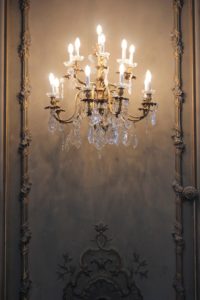Bronze is a very popular metal but most people would admit to knowing very little about it. All we know is that for a long time this metal has been used for making coins and sculptures. Those who have deeper understanding of history know that bronze was used for making armors and weapons, too. True enough, there’s more to bronze than what most of us have learned so far. Here’s to convince you that bronze metal for sale isn’t just your ordinary metal.
Properties That Set Bronze Apart from Other Metals
You may be wondering why, of all the metals out there, bronze, which isn’t really the most attractive, has gained that much attention. Well, there are a number of reasons. First, it has been around for over 5000 thousands years and extensively used for a vast range of applications. In fact, due to the immensity of bronze production and trade during the first few hundred years since its discovery, an entire era in history was named after it.
But that doesn’t really answer the question. The real secret to bronze’s prominence as a material lies within its molecular structure. An alloy of copper and tin, bronze possesses an amazing selection of properties, which are responsible for its many uses. Here are some of those distinct properties:
-
Ductility.
Various grades of bronze bars can be produced by combining different amounts of copper and tin, and by adding a minute amount of other metals. Each grades comes with slight difference in properties. But one thing stays common among all types of bronze—they are all ductile. Meaning, they can be drawn into small wires without breaking.
-
Low Friction.
Most metals heat up fast or even produce sparks when slid or rubbed against another metal. Bronze, however, does not. It exhibits low friction, which makes it the perfect material for machine parts.
-
Passive Oxidation.
When exposed to oxygen or air, most metals, especially those that contain iron, start to corrode. Copper-based metals like bronze, however, react differently. They form a layer of copper oxide called patina. Later this layer becomes carbonate and serves as a protection against wear, and it looks stunning, too.
-
Machinability.
Metals are dense and hard to wield. Even with proper manipulation, most metals wouldn’t be easy to machine. Bronze, on the other hand, has a unique ability to be shaped into sprockets, gears, and other detailed pieces.
Common Items that Are Made of Bronze
Even though you don’t see a lot of bronze around you, this metal is actually more common that you think. They are everywhere, and you just don’t notice them because you have no idea they are bronze. So here are some examples of common items made of bronze that you probably encounter every day.
-
Church Bells.
You hear them ringing every Sunday or when a wedding is taking place but did you know that church bells are actually made of bronze? It’s not an accident that this metal is used for making such humongous items. It’s just that bronze has the acoustic property necessary for such application. Its tin content prevents deformation in the molecules of bronze when hit with an object, and instead cause them to vibrate, producing a beautiful ringing sound as a result.
-
Springs.
These are devices that are capable of storing mechanical energy. We have them within our mattresses, garage doors, and security doors. Our vehicles have springs within them, too. Some applications require springs that are made of bronze, particularly phosphor bronze. These include construction of marine fuel pumps, oil rigs, oil pipeline valves, and automotive shock absorbers and stabilizers.
-
Marine Architecture.
It is only recently that certain types of bronze are resistant not just to water corrosion but also to saltwater corrosion. It is known for a fact that saltwater is about ten times more corrosive than freshwater. Modern-date watercrafts now have copper alloys incorporated in their designs to take advantage of this distinct property.
-
Strings of Musical Instruments.
That’s right, the strings on your guitar are made of bronze, thanks to the same property that makes it well-suited for bells, and to its ductility, too. Not very many metals can be drawn into thin strings like that apart from bronze. It can maintain its density and strength even as you twist the turning pegs.
-
Plumbing and Carpentry Tools.
When doing little repair work around the house, you need tools like hammer, mallet, and wrench. Be careful when using these tools near flammable gases and vapors. Especially if they are made from steel, they can create sparks that could ignite the gas and cause explosion. Thankfully, with bronze tools, you can avoid such as incident, because bronze doesn’t produce sparks, as discussed earlier.
Because bronze seems so elusive, you may think that bronze channels and bars are hard to find. In truth, they are quite abundant and can be bought from your nearby metal supply store. However, if you want high-quality bronze supplies, look for any of the country’s leading copper suppliers, such as Rotax Metals. They surely provide the best copper-based materials on the market.




